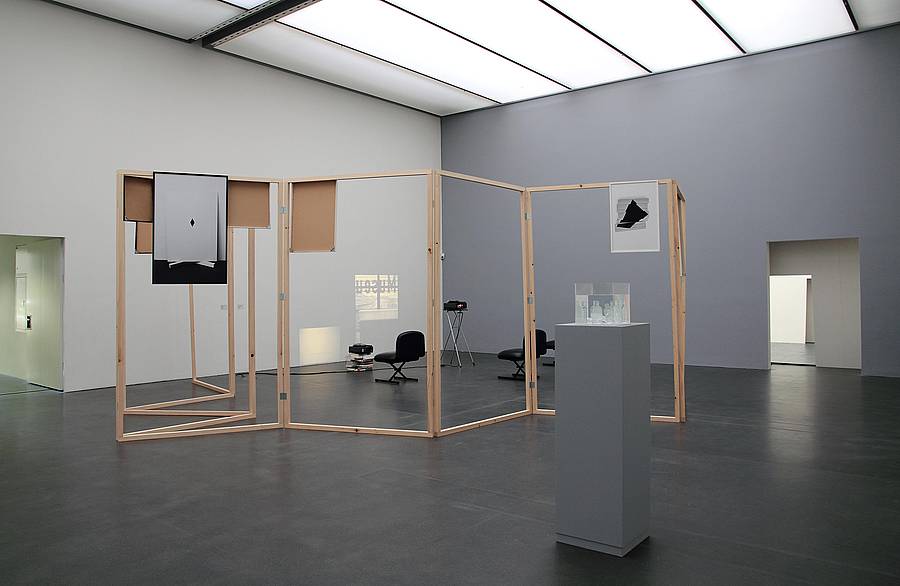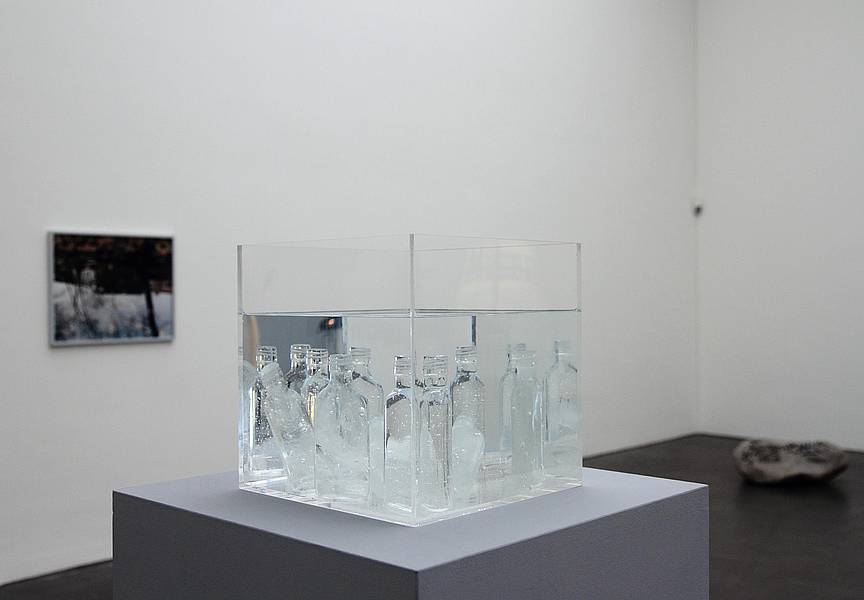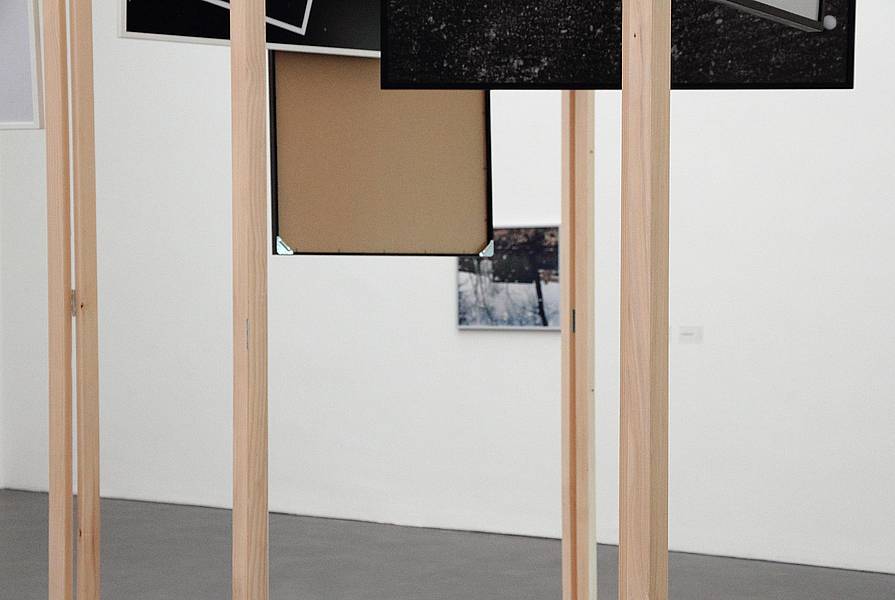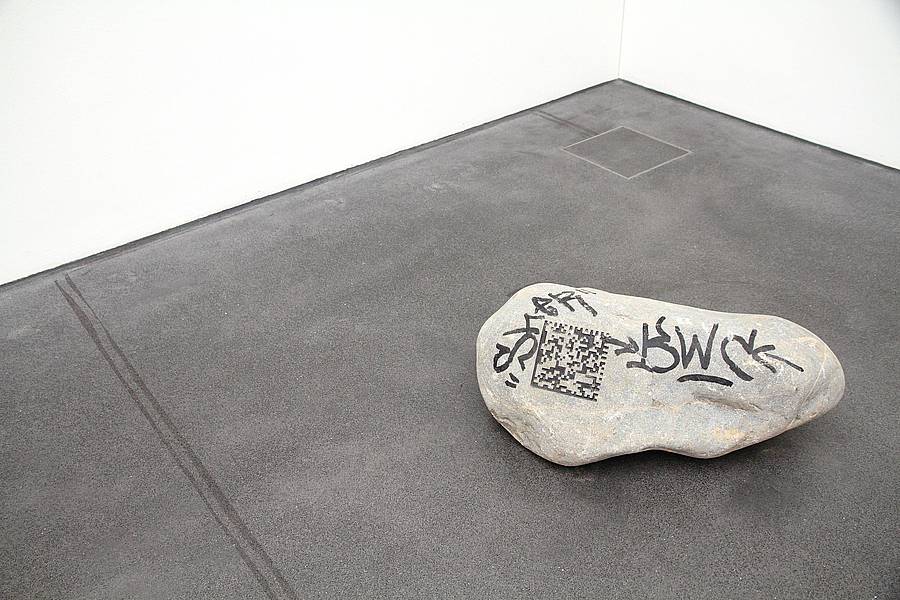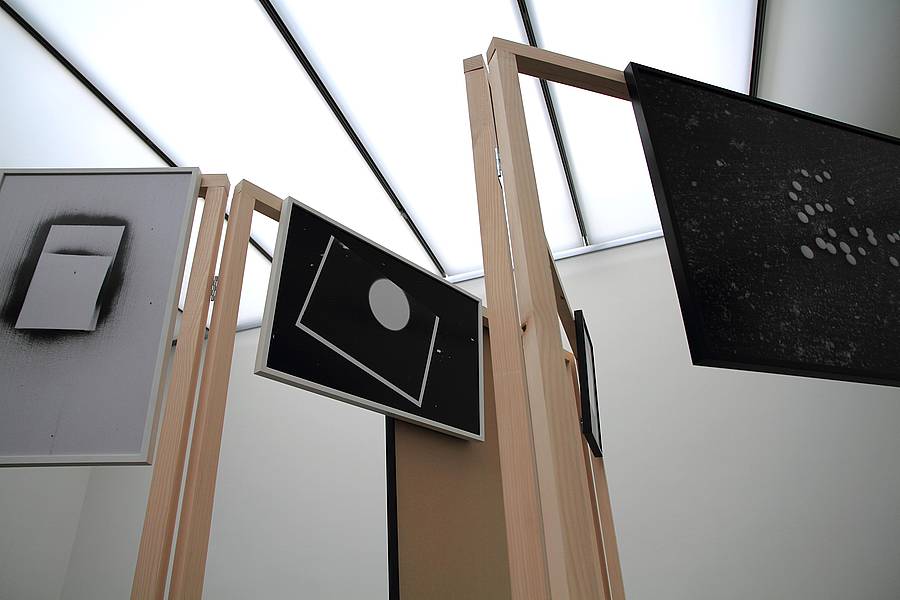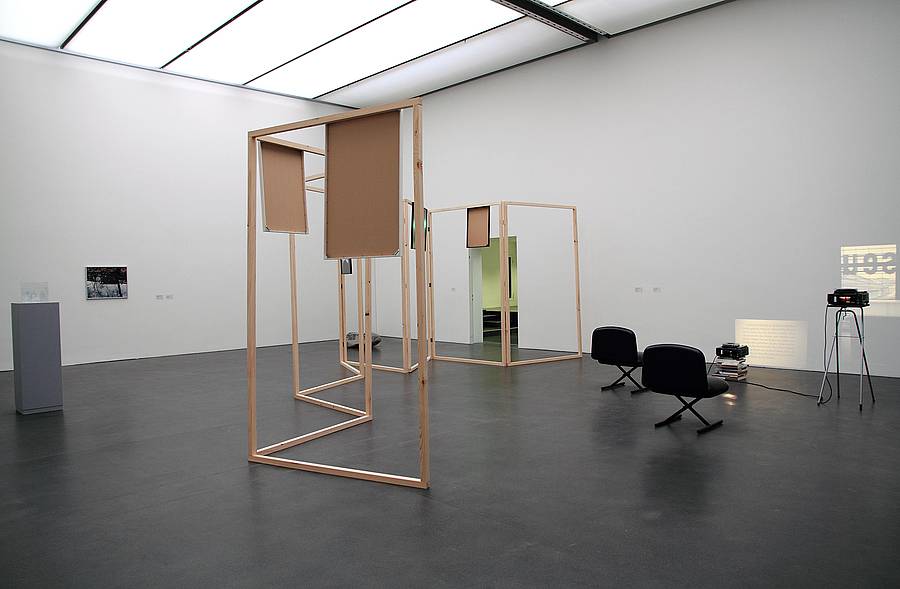Absence. Zentralschweizer Kunstszenen 2010
Kyra Tabea Balderer, Lukas Hoffmann, Silvana Innaetta, Christoph Lang, Roland Roos, Peter Stobbe
Exhibition from December 11 2010 till February 6 2011
curated by Damian Jurt
(e) Since the 1920s it is customary to exhibit contemporary art in a neutral white-colored environment in order to have the exhibition architecture retreat behind the artwork. It seems as though an adequate exhibition form for art had been found. This limited the form of the exhibition and the perception of art connected to it. The question arises as to how extensive the influence of the architectural context is on the production and presentation of art. In addition, the institution as a medium and its political function are increasingly in the focus of the current discourse. Should art consider alternative models of exhibition spaces within the institutional context? To this effect the exhibition brings together six artistic positions that highlight different aspects of the exhibition space. Models, mindsets, viewpoints, fictional spaces and political activities are considered in relation to each other. The existing architecture is studied and counterproposals to it made. The connections to public spaces are established and individual perceptions of spaces outside the museum are shown. The Internet as a virtual space is part of the artistic intentions. As a curatorial gesture, a wall will also be painted grey, which corresponds to the color of the objects to be exhibited. This allows the space to become a part of the substance of the exhibition itself.
(g) Seit den zwanziger Jahren des letzten Jahrhunderts ist es üblich zeitgenössische Kunst in farbneutralem Weiß zu zeigen, um die Ausstellungsarchitektur deutlich hinter das Kunstwerk zu stellen. Es scheint, als ob damit eine adäquate Ausstellungsform für Kunst geschaffen wurde. Dem Modus des Zeigens und der damit verbundenen Wahrnehmung der Kunst sind somit aber auch Grenzen gesetzt worden. Es stellt sich zudem die Frage, wie gross der Einfluss des architektonischen Kontextes auf die Produktion und Präsentation von Kunst ist. Zusätzlich steht die Institution als Medium und ihre politische Funktion zunehmend im Fokus des aktuellen Diskurses. Soll also die Kunst innerhalb des institutionellen Kontextes alternative Raummodelle zur Diskussion stellen? Die Ausstellung bringt in diesem Sinne sechs künstlerische Positionen zusammen, die unterschiedliche Aspekte des Raumes beleuchten. Es sind Modelle, Denk- und Sichtweisen, fiktive Räume und politische Handlungen, die zueinander positioniert werden. Es wird die bestehende Architektur untersucht und ihr Gegenvorschläge gegenübergesetzt. Die Verbindungen zum öffentlichen Raum werden angelegt sowie individuelle Sichtweisen von Orten ausserhalb des Museums gezeigt. Das Internet als virtueller Raum ist Teil von künstlerischen Absichten. Als kuratorische Geste wird zudem eine Wand grau gestrichen, die dem Farbton von Ausstellungselementen entspricht. Der Raum kann somit als Teil des Ausstellungsinhalts gelesen werden.
